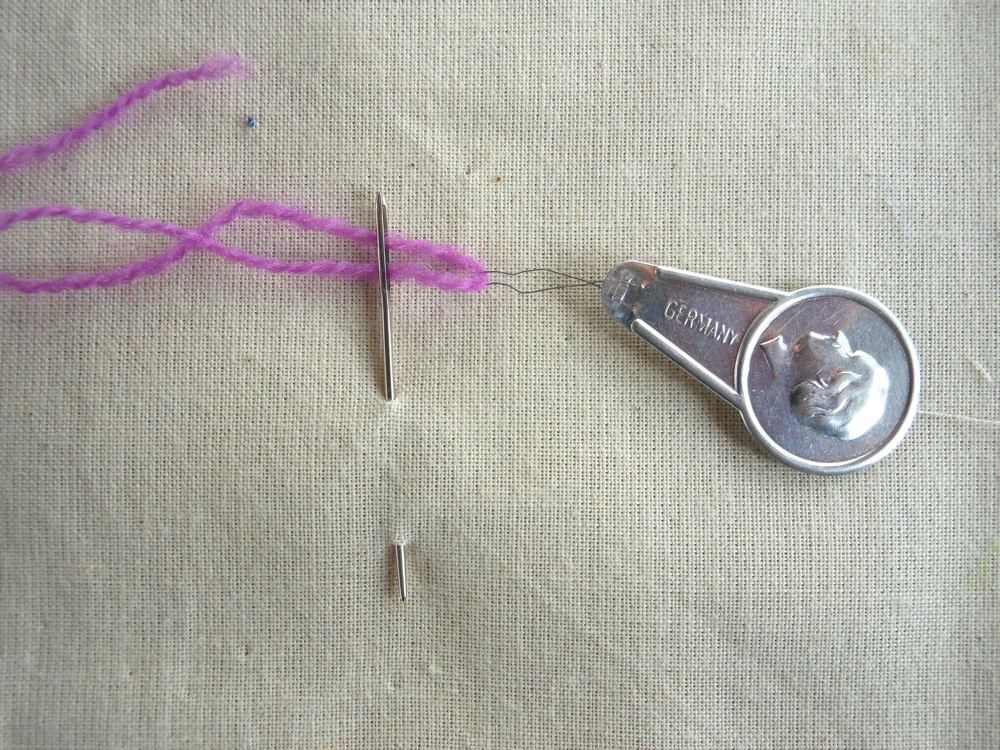This resource provides a starting point for making your sewn square for the AccessArt Village Project.
Part One – Make the Drawing

Cut a piece of paper into a 20cm x 20cm square. Decide on the view of your home you would like to draw. To make the initial drawing on the paper take a pencil or pen, and try making a continuous line drawing of your home.
A continuous line drawing is a drawing in which the pen does not leave the paper. Instead the pen travels around the page as your eye sees the object it is drawing. Find out how to do a continuous line drawing here.
Keep your drawing fluid and relax when you make it – it is only a preliminary sketch to help you gather information.

Part Two – Transfer the Drawing to the Fabric
Next take a square of fabric. If you intend to use an embroidery hoop (this might help small children as well as adults), then you may want to make sure your fabric is larger than 20 cm square. You can stitch your drawing onto your choice of fabric.
It’s best to go for something that will support your stitching without distorting the fabric. You could choose from medium-weight cotton/cotton sheeting, calico, felt, evenweave fabrics, linen and lightweight furnishing fabrics. Take care not to pull the stitching too tight if your fabric is not supported by an embroidery hoop. Calico can be softened by prewashing.

Place a piece of carbon copy paper ink side down, over your fabric. On top of this place your continuous line drawing. Now use a pencil or pen to trace over your drawing. You might have to press on quite hard and go over your line – experiment with how much pressure you need to transfer the line.
This is your chance to decide which lines you really like, which lines you think really help give your drawing personality and help describe your home, and which lines you are less keen on. If there are any lines you do not like in your initial sketch, then simply don’t trace over them.




Part Three – Stitching





If you haven’t sewn before, it might be a little daunting knowing how to begin. When you start stitching with your first thread, either tie a knot in the end (quite acceptable for our project!) or make your first stitch, leaving a long tail of thread on the back of the fabric. Then, when you have made a few stitches, weave this tail gently under about four stitches and then snip off the end.



When it comes to turning your line drawing into an embroidery, be creative! Think in terms of how you can use different stitches to create interesting and varied marks. (You may enjoy looking at Diverse Mark Making which explores how you can make your drawings more interesting by using diverse mark making).
Be as creative as you can in your stitching! Think of your embroidery as a line drawing – you might want to use any or all of these stitches in your work:
A simple running stitch:

Backstitch:

Seed stitch:

If you feel more confident, you might want to explore other decorative stitches, such as the ones shown below or use your own favourite stitches.

You can use any stitching technique or combination of stitch processes to create your house e.g hand stitching and appliqué or collage, free motion embroidery on the sewing machine or mixing hand and machine stitching to get the effect you want – you can be as expressive and inventive as you like!
Other resources that you might enjoy:
Draw Your Home: Collage, Stitch and Fabric Crayons
Collagraph, Collage and Stitch: make and Image of your Home on Fabric